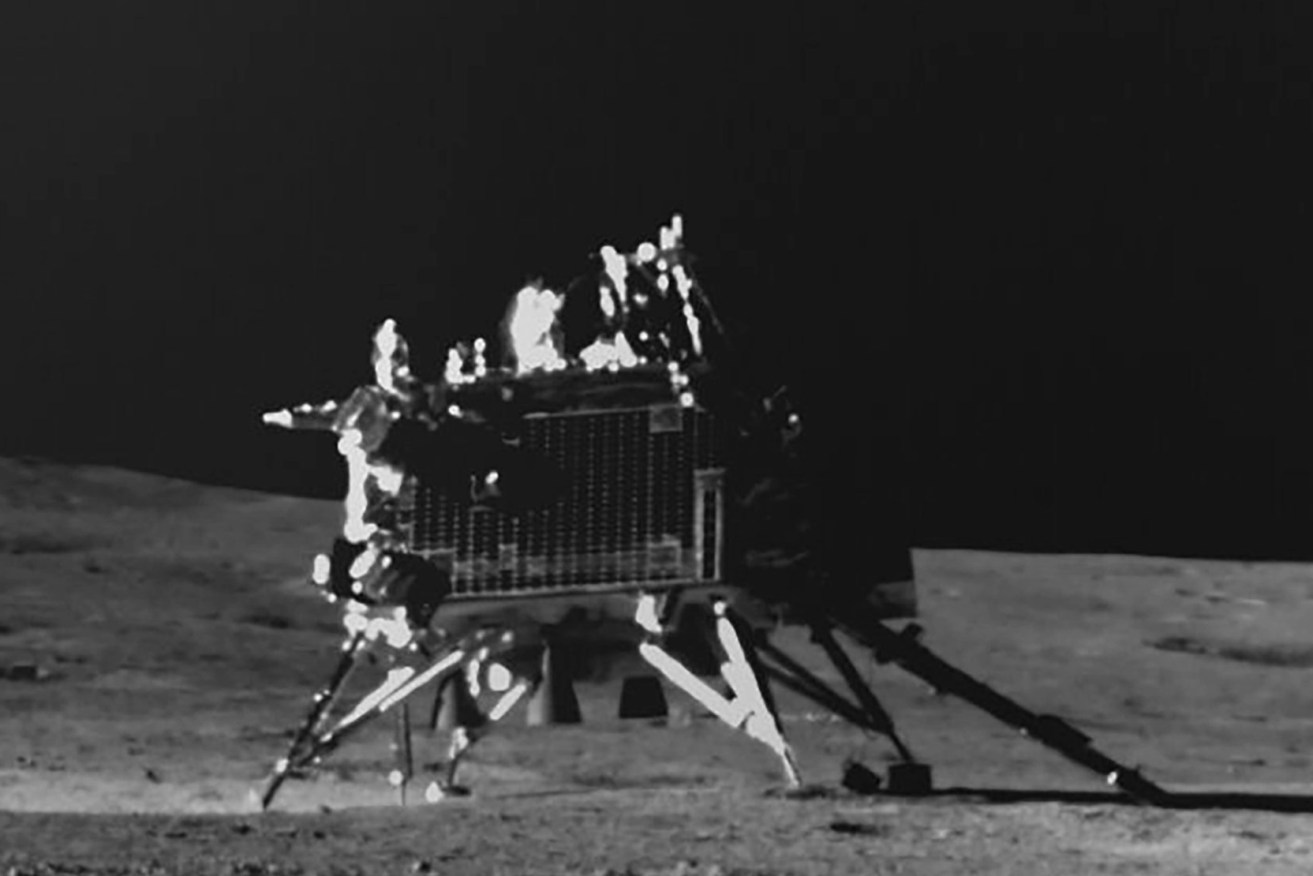Indian landing craft completes moonwalk; now the hard part – finding a place to park
India’s moon rover has completed its walk on the lunar surface and been put into sleep mode less than two weeks after its historic landing near the lunar south pole, India’s space mission said.

This image provided by the Indian Space Research Organisation (ISRO) shows Vikram lander as seen by the navigation camera on Pragyan Rover on Aug. 30, 2023. (Indian Space Research Organisation via AP)
“The rover completed its assignments. It is now safely parked and set into sleep mode,” with daylight on that part of the moon coming to an end, the Indian Space Research Organization said in a statement late Saturday.
The rover’s payloads are turned off and the data it collected have been transmitted to the Earth via the lander, the statement said.
The Chandrayaan-3 lander and rover were expected to operate only for one lunar day, which is equal to 14 days on Earth.
“Currently, the battery is fully charged. The solar panel is oriented to receive the light at the next sunrise expected on September 22, 2023. The receiver is kept on. Hoping for a successful awakening for another set of assignments!” the statement said.
There was no word on the outcome of the rover searches for signs of frozen water on the lunar surface that could help future astronaut missions, as a potential source of drinking water or to make rocket fuel.
Last week, the space agency said the moon rover confirmed the presence of sulphur and detected several other elements. The rover’s laser-induced spectroscope instrument also detected aluminium, iron, calcium, chromium, titanium, manganese, oxygen and silicon on the surface, it said.
The data is back on Earth and will be analysed by Indian scientists as a first look and then by the global community, he said
After a failed attempt to land on the moon in 2019, India last week joined the United States, the Soviet Union and China as only the fourth country to achieve this milestone.
The successful mission showcases India’s rising standing as a technology and space powerhouse and dovetails with Prime Minister Narendra Modi desire to project an image of an ascendant country asserting its place among the global elite.
The mission began more than a month ago at an estimated cost of $US75 million ($A116 million).
India’s success came just days after Russia’s Luna-25, which was aiming for the same lunar region, spun into an uncontrolled orbit and crashed. It had been intended to be the first successful Russian lunar landing after a gap of 47 years.
Russia’s head of the state-controlled space corporation Roscosmos attributed the failure to the lack of expertise because of the long break in lunar research that followed the last Soviet mission to the moon in 1976.
Active since the 1960s, India has launched satellites for itself and other countries, and successfully put one in orbit around Mars in 2014. India is planning its first mission to the International Space Station next year, in collaboration with the United States.












